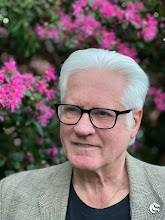Here is a long extract from a much longer review - for the full thesis, read the whole thing and see Brown's response:
Many men who lost their faith during the long 1960s spoke, in retrospect, of their development of naturalistic worldviews through encounters with science and philosophy, whereas only a few women spoke like this. Instead, women often reported distressful events in their lives from gender-based subordination, abuse, or loss of loved ones. Unlike the men in Brown’s sample, the women described their disengagement from family expectations and their rejection of 1950s’ ideas of respectability and piety. Conversely, these women did not speak in the same way as men of psychological trauma from the actual experience of shedding religious belief. At a critical transition point in Western history, it seems, men and women tended to become alienated from religion by different paths.
For Brown, certainly, the key change was the alienation of many women in the 1960s. He refers to ‘the declining acceptance by young women of the traditional Christian ideal of marriage, motherhood and domesticity’ (p. 6). Many women ceased to accept – and ceased to reflect in their own thoughts and speech – Christian moral discourse relating to pious femininity and to moral virtue more generally. Not surprisingly, then, Brown finds strong interconnections between what he calls ‘the rise of no religionism’ (p. 89) and the dramatic changes for women and families associated with the 1960s’ demographic transition. These changes included later marriages, increased sexual activity outside of marriage, a steep decline in fertility levels, and far greater participation by women in higher education and the paid labour market.
At this critical point in history, many women became unwilling to submit to the regime of sexual control imposed by the churches and often enforced through the family. In rejecting this, they inevitably denied the authority of religious culture and discourse. In interviews, feminist respondents often reported a general alienation from religion and conventional morality at an early stage in their lives. This often preceded (and perhaps motivated) their feminism, but their feminism, in turn, preceded their self-recognition as humanists or atheists.
While Brown’s interviews were with self-conscious non-believers, it seems likely that there was widespread alienation of women from religion during the 1960s, extending to some who retained a residual faith. Becoming Atheist tends to confirm a dissatisfaction among the young women of the time with conventional morals and gender roles. When added to more traditional – largely male – suspicion of religiosity, this could be an effective recipe for snowballing irreligiosity. Bear in mind that some male compliance with religious and moral norms may have been in deference to the real or imagined sensibilities of women. An unprecedented defection of women from religiosity could thus have had a very large impact.In his response, Brown does not disagree with anything that I have quoted above. He identifies some possible minor differences between us on other issues, although I'm not sure that we really do differ. If we really do differ about any empirical claims, I'm open to the possibility that he is right on them, but I don't think it's at all clear that we do, even if we use slightly different language. At any rate, the references that he offers to support his points - whether or not they are really points that I disagree with - appear useful. I think this is the kind of constructive exchange from which onlookers, and even the participants, can learn.
I should say, that some of Brown's conclusions about, for example, the different paths by which (many) men and (many) women became alienated from religion in the middle to late decades of last century are unexpected. I.e., I don't think a layperson to these arguments would have expected them. Even I, as someone who has looked into this a bit, find them pleasingly unobvious and revealing. That does not mean I am especially sceptical about them, though. I think Brown's book (along with his earlier work on this topic) makes the empirical case pretty well.

No comments:
Post a Comment